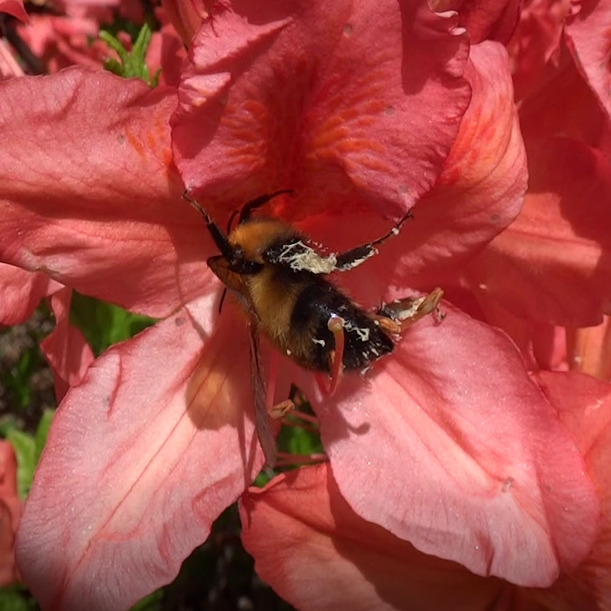Comparison of flower-visiting behaviour of bumblebees and swallowtail butterflies to the Japanese azalea (Rhododendron japonicum)
DOI:
https://doi.org/10.26786/1920-7603(2020)595Abstract
Examination of the efficacy of pollinators that are not morphologically matched to a flower’s shape can deepen our understanding of the main pollinators of a plant species. In central Japan, Rhododendron japonicum is visited much more frequently by bumblebees than by butterflies although its flower shape is more suited for pollination by large butterflies. Here, we observed flower-visiting behaviour of Bombus diversus queens and the alpine black swallowtail butterfly, Papilio maackii, and compared their efficacy as pollinators. Papilio maackii always touched the stigma during a flower visit, whereas B. diversus queens did so during just 54% of their flower visits. As bumblebees visit neighboring flowers of a R. japonicum tree in sequence not like Papilio maackii, we hypothesized that they deliver self pollen to R. japonicum so that the fruit set would be low. However, the fruit set in a bumblebee-dominated area was 72.5%, significantly higher than that by hand-pollination with self pollen (31.4%). This suggests that R. japonicum can obtain sufficient fruits by B. diversus queens although its flower shape morphologically matches to pollination by swallowtail butterflies.
Downloads
Published
How to Cite
Issue
Section
License
Copyright (c) 2020 Keigo Takahashi, Takao Itino

This work is licensed under a Creative Commons Attribution 4.0 International License.
JPE is an open access journal which means that all content is freely available without charge to the user or his/her institution.
Authors who publish with this journal agree to the following terms:
1) Authors retain copyright and grant the journal right of first publication with the work simultaneously licensed under a Creative Commons Attribution License that allows others to share the work with an acknowledgement of the work's authorship and initial publication in this journal.
2) Authors are able to enter into separate, additional contractual arrangements for the non-exclusive distribution of the journal's published version of the work (e.g., post it to an institutional repository or publish it in a book), with an acknowledgement of its initial publication in this journal.
3) Authors are permitted and encouraged to post their work online (e.g., in institutional repositories or on their website) prior to and during the submission process, as it can lead to productive exchanges, as well as earlier and greater citation of published work (See The Effect of Open Access).
To assure a broader targeted audience, content will be included into databases (such as EBSCO) and directories (such as DOAJ).











